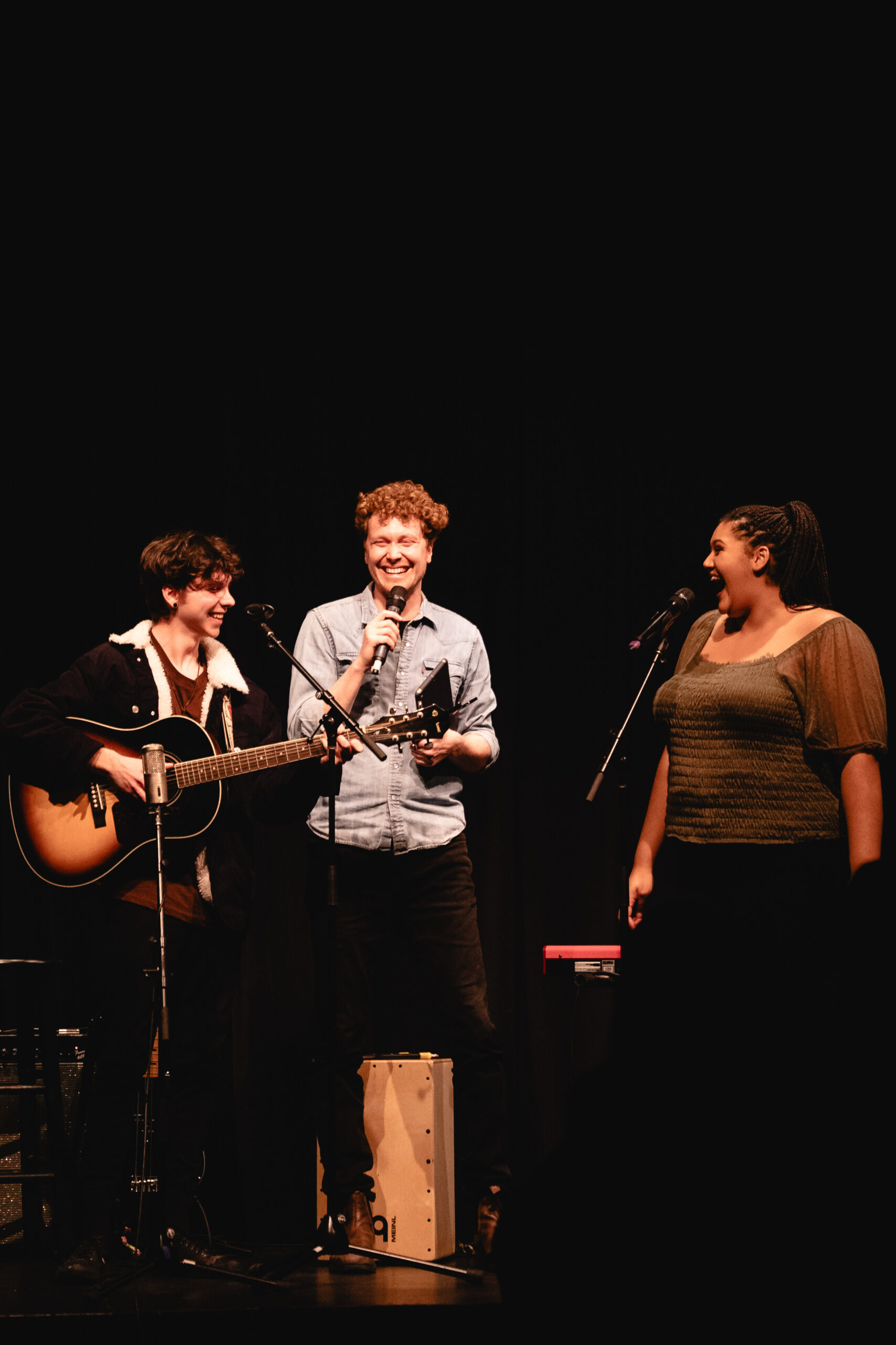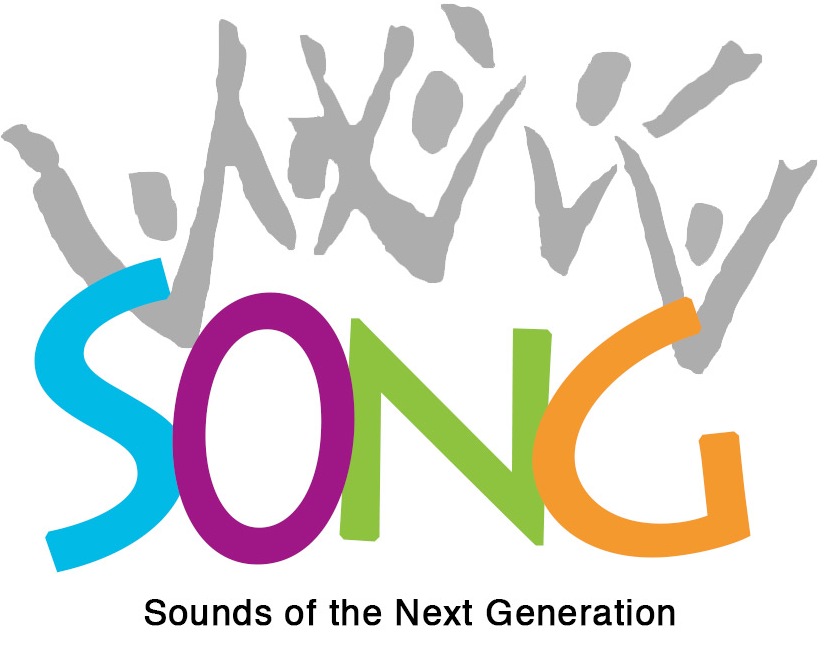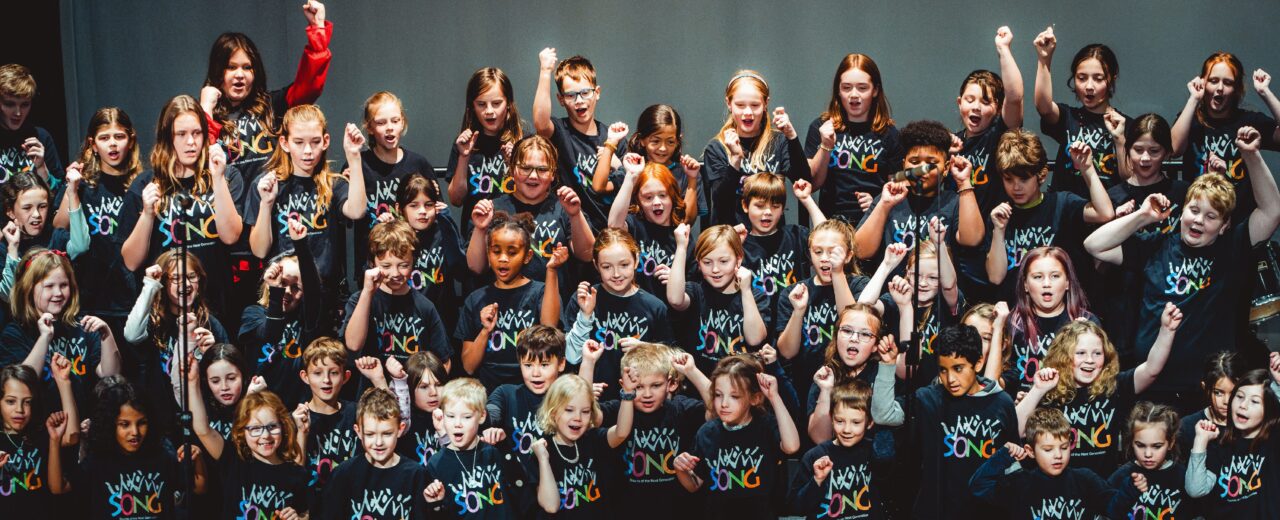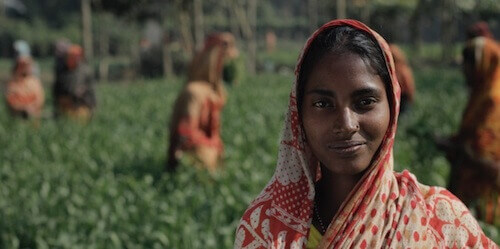 Help Canadian kids find their voice with music
Help Canadian kids find their voice with music
Access to music education is limited for rural kids in Ontario Canada
SONG’s music education approach stands out for two reasons: 1) We help young people connect with each other; and 2) We help them connect with themselves. In a time where it feels that we are more at odds than ever, SONG helps young people work in harmony. They form multigenerational bonds and lifelong friendships. They learn that their part contributes to a bigger and better whole. And they pass their learning on to peers! Recent graduate Chelsea returned from university to watch current students perform and share new skills. Perhaps most importantly, SONG connects individuals to themselves as they figure out who they want to be. Brandon’s mom shared with us that her son, a long-time attendee, came home from a difficult day at school unable to talk about what happened… until after a guitar session in his room. Following time with music he emerged ready to share and having found the words for what he went through. This is the transformative and lasting power that music has in our lives.
Necessity
Music Education for Rural Canadian Kids and Youth
Activity
Free on-site classes at schools, led by professional musicians
Countable effort
More kids who wouldn't otherwise get it, receive high-quality music instruction.
Result
Compared with our previous year, it is expected we will reach new rural schools and dozens of new students.
Systemic effect
SONG students cultivate essential life skills, emotional well-being, and form lifelong memories; they connect better with others and themselves.
Background
Rural life often means travelling to key resources or doing without. This can be isolating and disempowering and studies show that missing music means students achieve less in life. And feelings of isolation appear to be skyrocketing in youth. Music education is typically accessed through schools or private lessons in urban centres. Without transportation, kids are unable to access this vital learning opportunity. Ironically, as urban Canadians seek more affordable lives, our rural schools are becoming overcrowded; our limited resources are being diverted to core teaching priorities: music rooms are converted to regular classes and teachers are assigned to other subjects. SONG disrupts this trend by bringing high-quality music education directly to rural schools. We provide high-quality instruction from working artists on site at schools. We work with educators to expand the possibilities of teaching music in any space, and we make sure that kids who wouldn’t normally get music education get music exposure. Critically, this is only the first step of SONG’s approach. SONG also works to get our students into the community to make music with them. This means that SONG students experience not only the positive social benefits of group music making, but the additional benefit of current and new students working together to shape the ongoing cultural narrative in our region. Together, they literally find their community voice through SONG.
The good deed
SONG brings music education to students at their schools. Supporting this GOOD DEED means SONG can serve more students and work with more schools. Our recess-based, lunchtime, and after-school activities are transformative for our students. Our group music-making model is a vital component in learning to relate to and work with others. SONG students cultivate essential life skills, emotional well-being, and form lifelong memories; they connect better with others and themselves. Not only do our students learn how to connect, they learn to impact their community. SONG participates in multiple community music performances (another metric); last year, we took part in over 30 events, making music with >7500 individuals. Taken together, supporting SONG not only means young people receive the life-changing gift of music, but that the entire community benefits from a rich, sustainable multi-generational cultural experience – preserving and passing on their stories to new generations.

About Ontario, Canada
Ottawa
About 18.9% of Canadians live in rural areas. This equates to approximately 6.6 million people. The majority of Canadians live in urban centers, but rural populations still make up a significant portion of the country. Despite rural areas making up about 95% of Canada's landmass, the population density in rural regions is extremely low.
The GDP per capita in rural Canada can be roughly 25% to 40% lower than in urban areas, depending on the specific region. For comparison: Canada’s overall GDP per capita in 2023 was around $65,000 to $70,000 CAD. Rural areas are likely to have GDP per capita figures closer to $40,000 to $50,000 CAD, although this can vary significantly by province and region.
Music education in rural Canada is shaped by the challenges of geography, limited resources, and access, but communities and schools have found ways to keep music alive. Innovative approaches, community involvement, and growing online learning opportunities are helping to ensure that students in rural Canada can still develop their musical talents.
One fascinating story is the success and impact of Leahy, a famous Canadian musical family from the small rural community of Lakefield, Ontario. The Leahy family has become a symbol of rural Canadian talent reaching national and international acclaim, all while staying true to their roots.
About the organization and further information

SONG (Sounds of the Next Generation)
Website
Further information and source
- • Blasco-Magraner JS, et al., 2021 Apr 1;18(7):3668. Effects of the Educational Use of Music on 3- to 12-Year-Old Children's Emotional Development: A Systematic Review. Int J Environ Res Public Health. doi: 10.3390/ijerph18073668. PMID: 33915896; PMCID: PMC8037606.
- • Robb, A., et al., 2023. Supporting children’s wellbeing through music participation during the COVID-19 pandemic: evidence from Scotland. Education 3-13, 1–18.
- • Hebert, E. 2023. The Magic of Music on Children’s Emotional Wellbeing. The Children’s Society.
- • Media Release 2023. New CDC data illuminate youth mental health threats during the COVID-19 pandemic. The Centre for Disease Control and Prevention.




